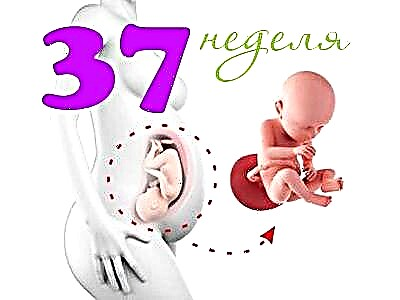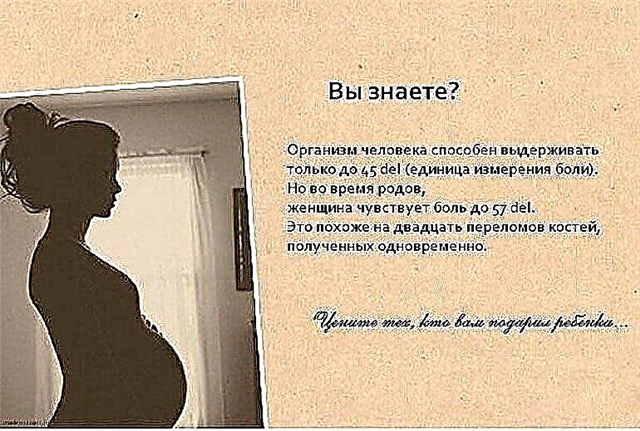
The baby's gait changes or he begins to complain that his legs hurt. Parents should not ignore these complaints, because the problem can be much more serious than it seems at first glance. There are many reasons for pain in the lower extremities. The diseases that are accompanied by such a symptom are far from harmless.

Common complaints
Most often, doctors are referred to with complaints of pain in the knees, which is of a shooting nature. No less often, children complain of aching legs in the morning or in the evening. Often the baby declares that his feet hurt.
If no additional symptoms are added to these complaints, it is likely that there is no danger or the problem is easily remedied. But swollen and reddened joints, pain that does not go away throughout the day, accompanying aching or sharp pains in the spine, hip joint, general malaise, and a lag in physical development should alert both the doctor and the parents. Such children need a thorough examination, which will include X-rays, ultrasound of joints and blood vessels, and MRI.
A full examination with mandatory blood tests should also be done for spasms of the gastrocnemius muscle. They say about such a condition “the leg has brought together”.
If a child's legs are reduced every day and not once, if this problem bothers at night, be sure to consult a doctor as soon as possible.

Possible causes are physiological
Most often, small children aged 2-3-4-5 years, a little older and adolescents complain of pain in the legs. In both cases, the appearance of discomfort is usually associated with the most natural reason - the rapid growth of bones, for which the muscular skeleton and ligaments do not always "keep up".
This is due to the fact that there are not enough elastic fibers in the child's body until the age of 6-7 years. The peculiarity of the child's body is that the feet and calves grow faster than the rest of the limb. It is clear that they require an increased blood supply. And it can only be during the day, when the child runs, jumps, plays, when his muscles are working. At night, the intensity of blood circulation slows down somewhat, hence the appearance of pain.

Such physiological pains are not a disease, but parents still need to monitor the gait and condition of the child, more often pay attention to the time the pain occurs (the legs hurt after sleep or after a long walk, are the pains associated with the weather, etc.). Most often, physiologically conditioned discomfort occurs in the evenings, after the child has been moving all day. They have the character of aches, especially the knees, ankle, and the Achilles tendon are very painful.

Trauma
If usually no discomfort is observed and the syndrome has arisen suddenly, this may indicate the presence of an injury. Children, especially those who are mobile and addicted, may not notice how in the midst of the game they stretched, twisted or bruised their leg, and a little later, when the kids calm down, the pain manifests itself in all its glory. You should carefully examine the leg for edema, bruises, wounds, if necessary, apply cold to the damaged area and go to the emergency room.

Diseases
If the cause of pain is inflammation in the joints, such complaints cannot be ignored. A huge number of diseases, both infectious, vascular, neurological, and musculoskeletal, can cause such an unpleasant symptom. These ailments can be both congenital and acquired.


If it is more and more clear with congenital, since parents know what they are dealing with and guess what pains can cause, then with acquired ones it is more difficult. Painful changes in the muscles, joints and bones of the legs can be caused by:
scoliosis;
flat feet and hallux valgus;
Schlatter's disease;
deficiency of calcium and phosphorus;
diabetes;
defects of the heart and blood vessels with insufficient blood supply to the lower extremities;
leukemia;
varicose veins;
infectious diseases;
neurocircular dystonia;
rheumatism or rheumatoid arthritis;
chronic diseases of the nasopharynx (tonsillitis, adenoids).


Inflamed joints are the most alarming sign.
If the joint becomes red, gray or brown, this may indicate a systemic infection, you should go to the hospital immediately. If it is not possible to get there by yourself, you should call an ambulance.
But with pain in the knee joint and below it, when it shoots from the front of the calyx from time to time, you should be understanding - this is the so-called Schlatter's disease. It occurs for reasons still unknown to medicine, but it does not pose a particular risk to the child and in most cases passes with age. Most often, it is registered in children who are actively involved in sports.

Psychosomatic causes
Oddly enough, but in children, the appearance of pain syndrome is very interconnected with mental and emotional state. Therefore, it happens that a comprehensive examination does not reveal any compelling reasons for concern and then you can visit a psychologist. Severe fright, constant stress in which the child is, pressure on him from adults may well cause pain in the lower extremities.
In this case, the pains will be episodic, they will be quite strong. It is noteworthy that psychosomatic pains appear in circumstances reminiscent of those in which the disease first started. You can help your child by reducing the level of his daily stress. Positive emotions and elimination of the causes of fear or worries lead to the gradual disappearance of unpleasant sensations.

Other reasons
There is another category of patients with complaints of leg pain. The fact is that a child may not admit for a long time that he is wearing uncomfortable shoes, as a result of which his fingers and heels are injured. It can be old calluses and even growths. After removing them and changing shoes to a more comfortable one, the gait usually straightens out, and the complaints completely stop. If the cause of the discomfort is an ingrown toenail, then it is removed rather quickly and almost painlessly, after healing all the symptoms disappear.


Where to contact?
If a child complains of pain in the legs, parents should definitely begin the examination with a visit to a traumatologist. The child will be examined, if necessary, they will make an X-ray of that part of the lower limb, which the baby most often complains about, and will be informed if he has mechanical injuries. If they are not there, you need to go to the pediatrician with the pictures in hand
The children's doctor will definitely prescribe laboratory diagnostics for the child: urine analysis, clinical blood test, blood for leukocyte formula. In addition, the doctor must make sure that the child does not have an infectious disease, for example, such as the flu, because the legs also hurt with it. Based on the test results, the pediatrician will say whether there is enough calcium and phosphorus in the baby's body, their deficiency leads to severe spasms of the calves (the same condition when the "leg has pulled together").


With ready-made analyzes and X-rays, the child will go to a neurologist to make sure that there are no pathologies in the nervous system, and then to an orthopedic surgeon who will examine bones, joints, spine, feet for malformations, structural abnormalities. He will answer the question whether there are flat feet, deformity of the feet, scoliosis, poor posture, problems with joints and ligaments. May require additional MRI.?

If no violations are found here, and the legs still hurt, you will have to visit a pediatric hematologist, who, based on blood tests and additional research, will find out if the child has leukemia, in which leg pain is one of the starting symptoms.
Treatment will depend on the specific diagnosis, because for each of the above diseases, the therapy regimen is different.
Only a very small percentage of children with leg pain require surgery for vascular or orthopedic abnormalities. With early treatment and timely detection of the disease, more than 90% of pathologies can be corrected by conservative methods.

How to help at home?
In case of physiological pain, it is enough to lightly massage the feet in the morning, after waking up, this will help to establish a good blood supply to the lower extremities. In the evening, after all the active games for the legs, you can prepare a warm bath with a decoction of chamomile or plantain. After that, the feet should again be massaged a little before bedtime. This state does not require the use of medicines, as well as special skills in the art of massage.


In case of pathological pain, the attending physician may recommend non-steroidal anti-inflammatory ointments that can be rubbed into the sore spot, courses of serious therapeutic massage, and physical therapy sessions.
For some orthopedic diseases - wearing orthopedic shoes made according to special sizes, taking into account the angles of deviation from the norm. Parents can carry out almost all of these procedures to their child at home - both massage and exercise therapy (after preliminary training with a specialist).
With inflammation of the joints, non-steroidal ointments, as well as agents with a local anesthetic effect, help well. Sometimes compresses are allowed with them. With a lack of calcium and phosphorus, the child is prescribed appropriate drugs containing the necessary substances.


Useful Tips
From early childhood, when a child begins to take his first steps, he should have comfortable and correct shoes that fix the foot. It is best if it has closed toes and a small heel, as well as a stiff heel counter.
When complaining of pain in the legs, the child needs to walk barefoot more often - both at home and on the street (if you have your own yard, summer cottage, house in the village where you can walk on grass, stones, sand with bare feet). This contributes to the correct formation of the arch of the foot and a decrease in pain for physiological reasons, with flat feet. They may not reach them at all if the child is accustomed to walking barefoot from the first steps - such babies usually have no complaints about their legs.


There is no point in wearing orthopedic shoes unless prescribed by a doctor. If it is made without taking into account the individual characteristics of the foot, then there is no therapeutic benefit from it.
All preventive vaccinations should be done on time, this will protect the child from infections that can cause complications on the legs. You also need to timely treat influenza, SARS and visit the dentist for oral cavity sanitation.
You should not try to help a child with pain in the legs with folk remedies without consulting a doctor. This can lead to the loss of precious time, which is necessary for specialists to come to the aid of a child in time for serious illnesses.
You will learn more about the causes of leg pain and what to do in the following video.



